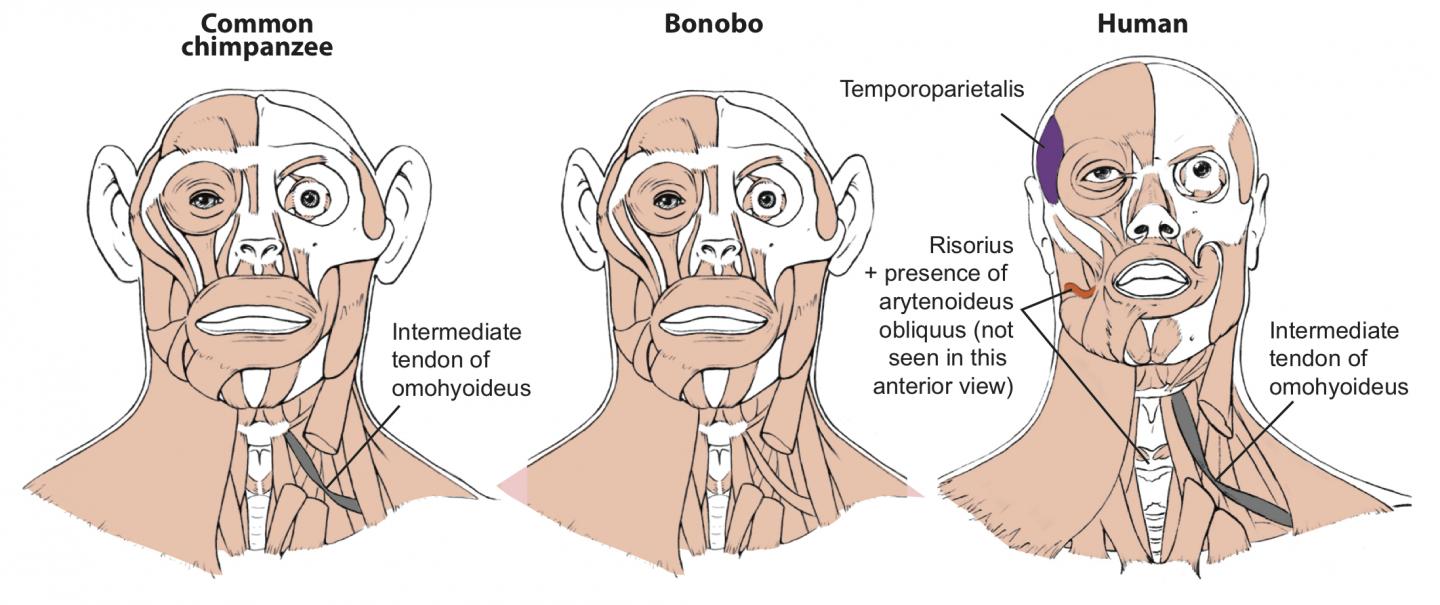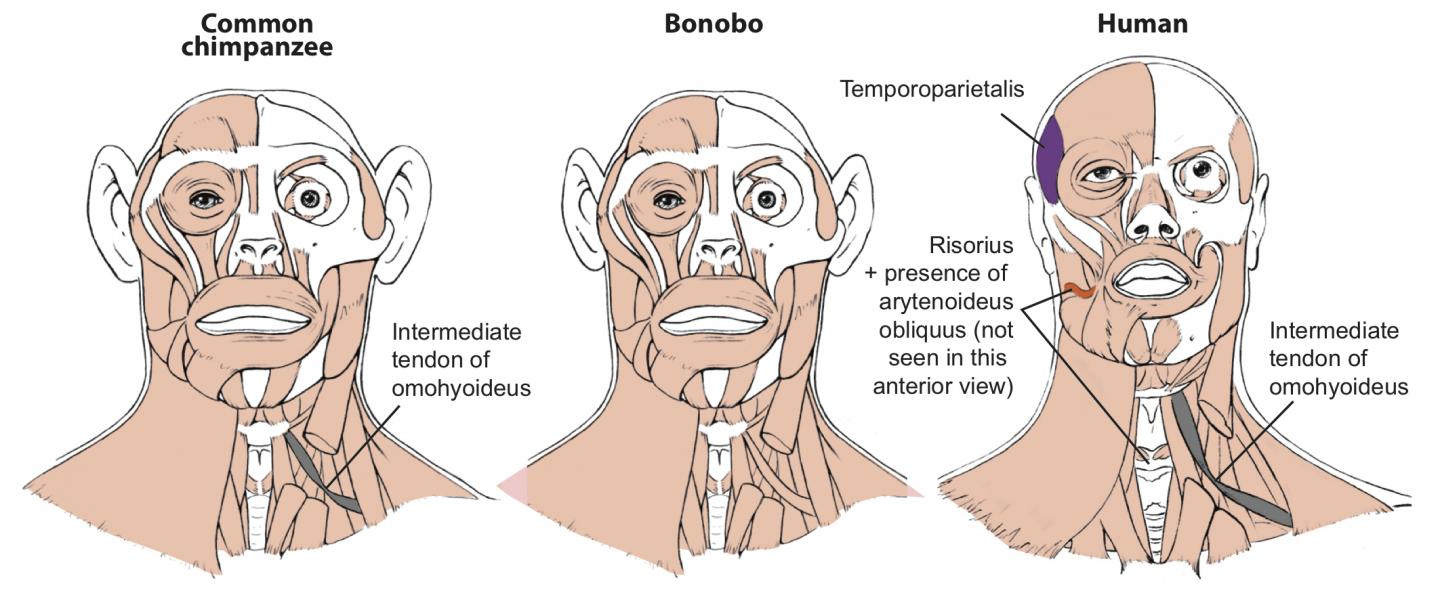
Credit: © Rui Diogo
Muscles once thought 'uniquely human' have been discovered in several ape species, challenging long-held theories on the origin and evolution of human soft tissues. The findings question the anthropocentric view that certain muscles evolved for the sole purpose of providing special adaptations for human traits, such as walking on two legs, tool use, vocal communication and facial expressions. Published in Frontiers in Ecology and Evolution, the study highlights that thorough knowledge of ape anatomy is necessary for a better understanding of human evolution.
"This study contradicts key dogmas about human evolution and our distinct place on the 'ladder of nature,'" says Rui Diogo, an Associate Professor in the Department of Anatomy at Howard University, Washington, USA. "Our detailed analysis shows that in fact, every muscle that has long-been accepted as 'uniquely human' and providing 'crucial singular functional adaptations' for our bipedalism, tool use and vocal and facial communications is actually present in the same or similar form in bonobos and other apes, such as common chimpanzees and gorillas."
Long-standing evolutionary theories are largely based on the bone structures of prehistoric specimens — and, according to Diogo, also on the idea that humans are necessarily more special and complex than other animals. These theories suggest that certain muscles evolved in humans only, giving us our unique physical characteristics. However, verification of these theories has remained difficult due to scant descriptions of soft tissues in apes, which historically have mainly focused on only a few muscles in the head or limbs of a single specimen.
Diogo explains, "There is an understandable difficulty in finding primate, and particularly ape, specimens to dissect as they are so rare both in the wild and museums."
To find enough data to complete this research, Diogo compiled all previous information on ape anatomy based on studies with colleague Bernard Wood. He also conducted anatomical research on several bonobos that died of natural causes, together with colleagues at the University of Antwerp under the Bonobo Morphology Initiative 2016 — looking for the presence of seven different muscles thought to have evolved only in our species.
Diogo discovered that these seven muscles were present in apes in a similar or even exact form. For example the fibularis tertius muscle, said to be uniquely associated with human bipedalism (walking on two legs), was present in half the examined bonobos. Similarly, both the laryngeal muscle arytenoideus obliquus and the facial muscle risorius — thought to have evolved for our uniquely sophisticated vocal and facial communication, respectively — were present in at least some chimpanzees and/or gorillas.
These findings open crucial new directions for research and question our understanding of human evolution. "The picture emerging from this research is that the origin and evolution of human soft-tissue is clearly more complex — and not as exceptional — as first thought," says Diogo.
"We need a more thorough examination of why these muscles are present in apes and, in some cases, in just part of a population within a certain species," he says. "Are these muscles essential for the apes that have them, as adaptationist evolutionary scientists would argue? Or are they evolutionary neutral features related to how their bodies develop, or simply by-products of other features?"
He concludes, "Most theories of human evolution give the impression that humans are markedly distinct from apes anatomically, but these are unverifiable 'just-so stories'. The real evidence shows we are not so different overall. This study highlights that a thorough knowledge of ape anatomy is necessary for a better understanding of our own bodies and evolutionary history."
###
Please include a link to the original research in your reporting: https://www.frontiersin.org/articles/10.3389/fevo.2018.00053/full
Frontiers is an award-winning Open Science platform and leading open-access scholarly publisher. Our mission is to make high-quality, peer-reviewed research articles rapidly and freely available to everybody in the world, thereby accelerating scientific and technological innovation, societal progress and economic growth. Founded in 2007 by neuroscientists Kamila Markram and Henry Markram, Frontiers has grown to become one of the world's largest open-access publishers, receiving the industry-leading ALPSP Gold Award for Innovation in Publishing in 2014. For more information, visit http://www.frontiersin.org and follow @Frontiersin on Twitter
Media Contact
Emma Duncan
[email protected]
@frontiersin
http://www.frontiersin.org
Related Journal Article
http://dx.doi.org/10.3389/fevo.2018.00053





